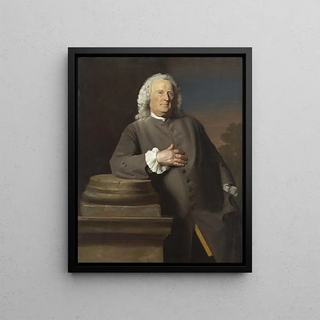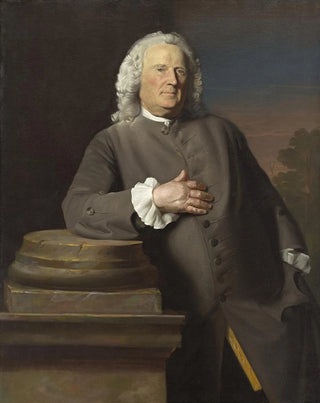Art print | Epes Sargent - John Singleton Copley


View from behind

Frame (optional)
Epes Sargent - John Singleton Copley – Captivating Introduction
The artwork "Epes Sargent - John Singleton Copley" stands as a vivid testament to an era where art and portraiture intertwine to capture the very essence of humanity. This painting, emblematic of the 18th century, transports us into a universe where technical mastery and emotion combine to offer an unforgettable visual experience. Through the penetrating gaze of its subject, Copley invites us to explore the subtleties of human personality, while immersing us in the social and cultural context of his time. The art print of this piece allows us to rediscover the evocative power of a portrait that goes far beyond mere physical features.
Style and uniqueness of the work
The uniqueness of "Epes Sargent" lies in how Copley manages to transcend simple portraiture to create a true psychological study. The artist's style, characterized by striking realism and meticulous attention to detail, is evident in the textures of the clothing, the delicate light caressing the subject's face, and the depth of shadows that add an almost sculptural dimension to the composition. Every element, from the choice of colors to subtle expressions, is carefully orchestrated to create a lively painting that captures the eye and the mind. Copley does not merely depict his model; he reveals the soul, offering a glimpse into the complexity of the individual he immortalizes.
The artist and his influence
John Singleton Copley, an iconic figure in American painting, made his mark by his innovative approach to portraiture. Born in Boston in 1738, he quickly gained fame thanks to his ability to blend European tradition with American sensibility. His technique, influenced by European masters such as Reynolds and Gainsborough, paved the way for a new era of American portraitists. Copley was able to capture not only the appearance of his subjects but also their social status and aspirations, which profoundly influenced how portrait art was perceived and practiced thereafter. His legacy endures, inspiring generations of artists to explore the relationship between the subject and the artist, as well as the representation of

Matte finish

View from behind

Frame (optional)
Epes Sargent - John Singleton Copley – Captivating Introduction
The artwork "Epes Sargent - John Singleton Copley" stands as a vivid testament to an era where art and portraiture intertwine to capture the very essence of humanity. This painting, emblematic of the 18th century, transports us into a universe where technical mastery and emotion combine to offer an unforgettable visual experience. Through the penetrating gaze of its subject, Copley invites us to explore the subtleties of human personality, while immersing us in the social and cultural context of his time. The art print of this piece allows us to rediscover the evocative power of a portrait that goes far beyond mere physical features.
Style and uniqueness of the work
The uniqueness of "Epes Sargent" lies in how Copley manages to transcend simple portraiture to create a true psychological study. The artist's style, characterized by striking realism and meticulous attention to detail, is evident in the textures of the clothing, the delicate light caressing the subject's face, and the depth of shadows that add an almost sculptural dimension to the composition. Every element, from the choice of colors to subtle expressions, is carefully orchestrated to create a lively painting that captures the eye and the mind. Copley does not merely depict his model; he reveals the soul, offering a glimpse into the complexity of the individual he immortalizes.
The artist and his influence
John Singleton Copley, an iconic figure in American painting, made his mark by his innovative approach to portraiture. Born in Boston in 1738, he quickly gained fame thanks to his ability to blend European tradition with American sensibility. His technique, influenced by European masters such as Reynolds and Gainsborough, paved the way for a new era of American portraitists. Copley was able to capture not only the appearance of his subjects but also their social status and aspirations, which profoundly influenced how portrait art was perceived and practiced thereafter. His legacy endures, inspiring generations of artists to explore the relationship between the subject and the artist, as well as the representation of






